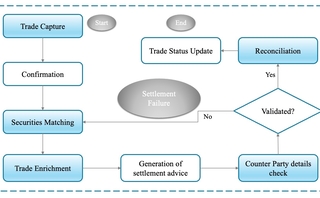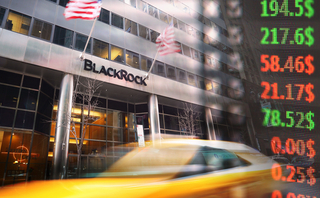Nasdaq says SaaS business now makes up 37% of revenues
The exchange operator’s Q3 earnings bring the Adenza and Verafin acquisitions center stage.

Nasdaq’s ongoing acquisition of Adenza and previous tech acquisitions such as anti-money laundering (AML) and anti-fraud platform Verafin took the spotlight during the exchange operator’s Q3 earnings call today.
Nasdaq benefitted from a slight pickup in IPOs and a 9% year-over-year growth across its Solutions business, which constitutes the revenues from its Capital Access Platforms, Anti-Financial Crime business, and Marketplace technology business. Across its Solutions business, revenues were $694 million, up 9% from the same period a year prior.
According to Nasdaq president and CEO Adena Friedman, anti-financial crime and regulatory reporting software are “need-to-have” for banks. The IPO business, on the other hand, has been more susceptible to macroeconomic uncertainty.
“Our software-as-a-service revenues now comprise 37% of total company annual recurring revenue,” Friedman said. Annualized SaaS revenues came to $773 million for Q3, demonstrating an annual growth rate of 11%. Nasdaq’s data business also delivered strong revenue growth, driven by demand from international data clients.
The company’s SaaS earnings have been underpinned by several strategic tech acquisitions. Nasdaq announced its $10.5 billion acquisition of Adenza, a regtech and risk management platform provider, in June of this year and said on the call it expects to close the deal in the next quarter, having now completed the antitrust review. Adenza was formed in 2021 by private equity firm Thoma Bravo by combining back-office risk management and regulatory reporting provider AxiomaSL and Calypso Technology, a front-office trading, risk, and processing platform.
Adenza added 17 new clients, 10 more than it added in the same period last year. “When it comes to market tech and anti-financial crime, those are really good solid demand businesses, where exchanges are very, very focused on bringing their technology into the future,” Friedman said. As for Adenza, she pointed to momentum following “regulatory obligations that are coming into the US, as well as the Basel III end game that’s … coming across both the US and Europe, driving certain demands.”
In June, sources told WatersTechnology that questions remained surrounding cloud integration and Adenza, whose combined technologies—Calypso and AxiomSL—were both launched in the 1990s. Friedman said Nasdaq is “pleased with the momentum of Adenza’s journey towards a cloud-based delivery of its solutions across both existing and new clients.”
Additionally, Nasdaq partnered with AWS in 2021 and has so far moved two of its matching engines to the cloud, with plans for more to follow. According to Friedman, as far as Nasdaq’s Solutions businesses, cloud is becoming the reality. The company noted that in the first three quarters of 2023, 55% of bookings with Adenza were for cloud-based delivery solutions, compared with 27% over the same period last year.
“That’s really, I think, a combination of two things. One is the fact that banks are more ready to accept cloud-delivered solutions. … We’ve seen that across all of our solutions across Nasdaq—they’re just more ready to have cloud be a big part of their infrastructure. And in terms of the revenue opportunities, there is a revenue uplift when we are able to sell a cloud module because we become a managed service provider and that takes away costs from—on their side—managing an on-premises solution,” Friedman said.
As for the integration of Adenza, Friedman said much of the planning, when it comes to the cloud, will have to wait until Nasdaq fully owns the tech. “We still obviously don’t own them. … We have not done a lot of detailed work yet on that because we don’t own them. We have a lot of, in my opinion, proprietary IP when it comes to our cloud capabilities and our cloud team. So we want to make sure that we own them before we go into really, really deep dives on the technical infrastructure,” Friedman said.
As for Verafin, the company’s AML and anti-fraud solution, numbers were rosy. Nasdaq bought Verafin in 2020 for $2.75 billion. According to Friedman, in a moment of market uncertainty, AML is a “need-to-have” for banks. Verafin delivered $93 million in total revenue during the third quarter, up 21% from the same period last year. Across the company, fraud detection and AML solutions revenues grew 29% compared to 2022’s third quarter. “I would say that every bank is facing more and more challenges with fraud and AML,” said Friedman.
Nasdaq is in contract negotiations with “several” tier-one and tier-two banks on these offerings. Friedman said that for banks, “it’s a really nice, clear return-on-investment capital when they come in and leverage our [AML] solutions.” In addition, Verafin is a cloud-based solution. Therefore, banks are “having to make less of an upfront investment from an infrastructure perspective and so it’s a cleaner—kind of frankly—commitment to us,” she said.
This is also one area where Nasdaq is leveraging significant applications of AI for fraud detection algorithms. Two weeks ago, while speaking to CNBC about Nasdaq’s anti-financial crime offerings, Friedman said the company is using cloud technology and AI algorithms to fight what she estimates is “about a $2 trillion issue in terms of the amount of money that’s laundered through the financial system globally.” The call also briefly highlighted Nasdaq’s Q3 launch of the first exchange AI-powered order type, which the company is calling its dynamic midpoint extended life order, or dynamic M-ELO. Dynamic M-ELO will be rolled out in the coming months, the company said on the call.
When asked how Nasdaq intended to stay ahead of Big Tech players such as Google, especially when it comes to AI applications, Friedman highlighted the difference between Nasdaq’s work and the work of companies like Google. Friedman categorized Google’s work with one bank as essentially “a facilitated bespoke build but with the underpinning of Google infrastructure.” For Nasdaq’s solutions, Friedman said, “we have built a purpose-built solution that is scaled across 2,500 banks.” In other words, “it makes it so the bank doesn’t have to do its own bespoke build,” she said.
As questions circled back to the acquisition of Adenza, Friedman pointed to the future. “I have a great view as to in five years, how do we want these services to be delivered? … What kind of overall, overarching environment [do] we want to create for our clients so they see us as a strategic partner across risk management, regtech, anti-financial crime, [and] capital markets? There’s a lot that we can do there but we have to get in there. We have to own them.”
Further reading
Only users who have a paid subscription or are part of a corporate subscription are able to print or copy content.
To access these options, along with all other subscription benefits, please contact info@waterstechnology.com or view our subscription options here: http://subscriptions.waterstechnology.com/subscribe
You are currently unable to print this content. Please contact info@waterstechnology.com to find out more.
You are currently unable to copy this content. Please contact info@waterstechnology.com to find out more.
Copyright Infopro Digital Limited. All rights reserved.
You may share this content using our article tools. Printing this content is for the sole use of the Authorised User (named subscriber), as outlined in our terms and conditions - https://www.infopro-insight.com/terms-conditions/insight-subscriptions/
If you would like to purchase additional rights please email info@waterstechnology.com
Copyright Infopro Digital Limited. All rights reserved.
You may share this content using our article tools. Copying this content is for the sole use of the Authorised User (named subscriber), as outlined in our terms and conditions - https://www.infopro-insight.com/terms-conditions/insight-subscriptions/
If you would like to purchase additional rights please email info@waterstechnology.com
More on Trading Tech
For MarketAxess, portfolio trading buoys flat revenue in Q3
The vendor is betting on new platforms like X-Pro and Adaptive Auto-X, which helped forge a record quarter for platform usage.
Quants look to language models to predict market impact
Oxford-Man Institute says LLM-type engine that ‘reads’ order-book messages could help improve execution
JP Morgan pulls plug on deep learning model for FX algos
The bank has turned to less complex models that are easier to explain to clients.
Harnessing generative AI to address security settlement challenges
A new paper from IBM researchers explores settlement challenges and looks at how generative AI can, among other things, identify the underlying cause of an issue and rectify the errors.
The causal AI wave could be the next to hit
As LLMs and generative AI grab headlines, another AI subset is gaining ground—and it might solve what generative AI can’t.
Waters Wrap: Operational efficiency and managed services—a stronger connection
As cloud, AI, open-source, APIs and other technologies evolve, Anthony says the choice to buy or build is rapidly evolving for chief operating officers, too.
BlackRock forecasts return to fixed income amid efforts to electronify market
The world's largest asset manager expects bond markets to make headway once rates settle.
This Week: JP Morgan, Broadridge, Lloyds, JSE, Schroders, and more
A summary of the latest financial technology news.








